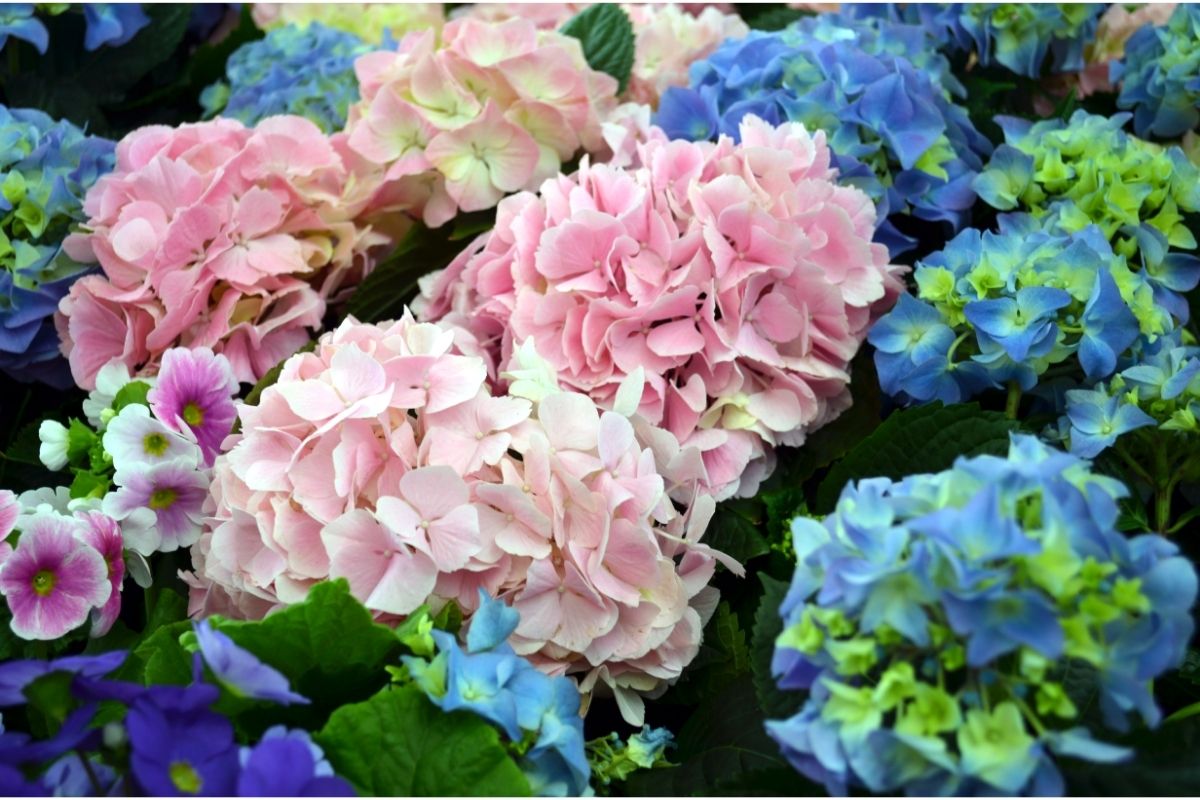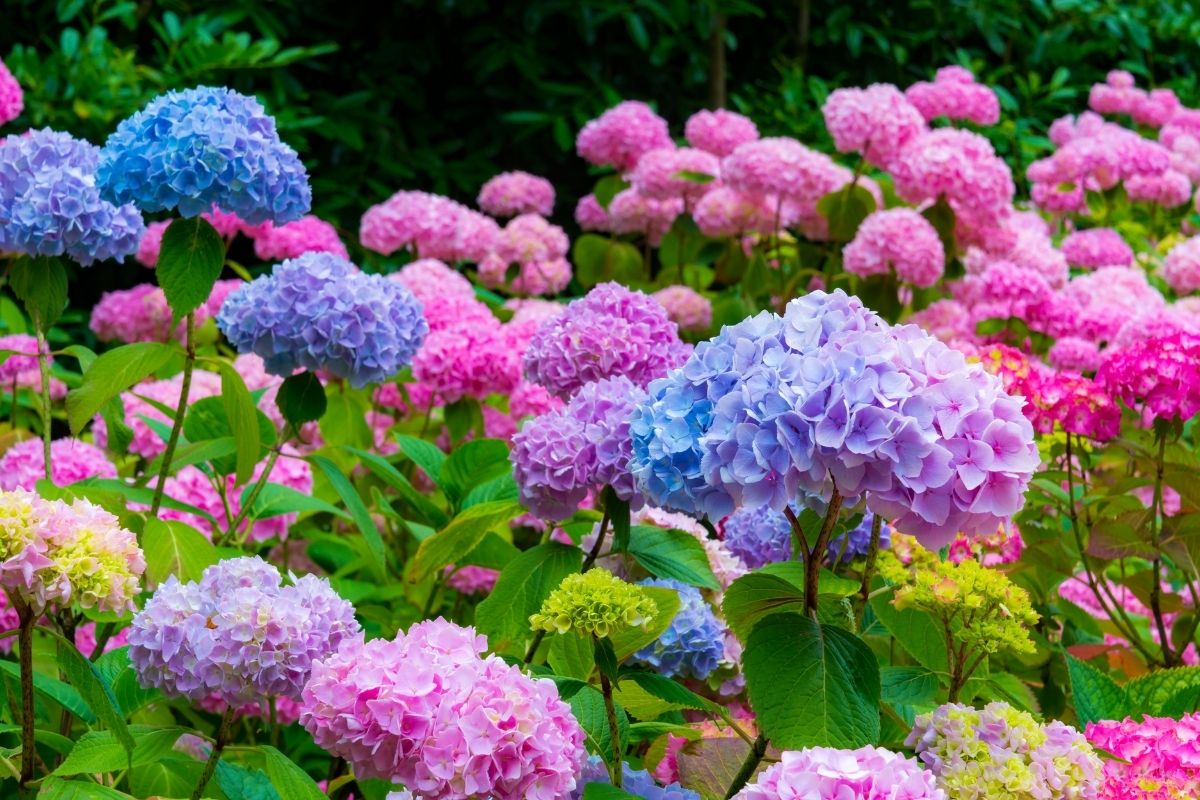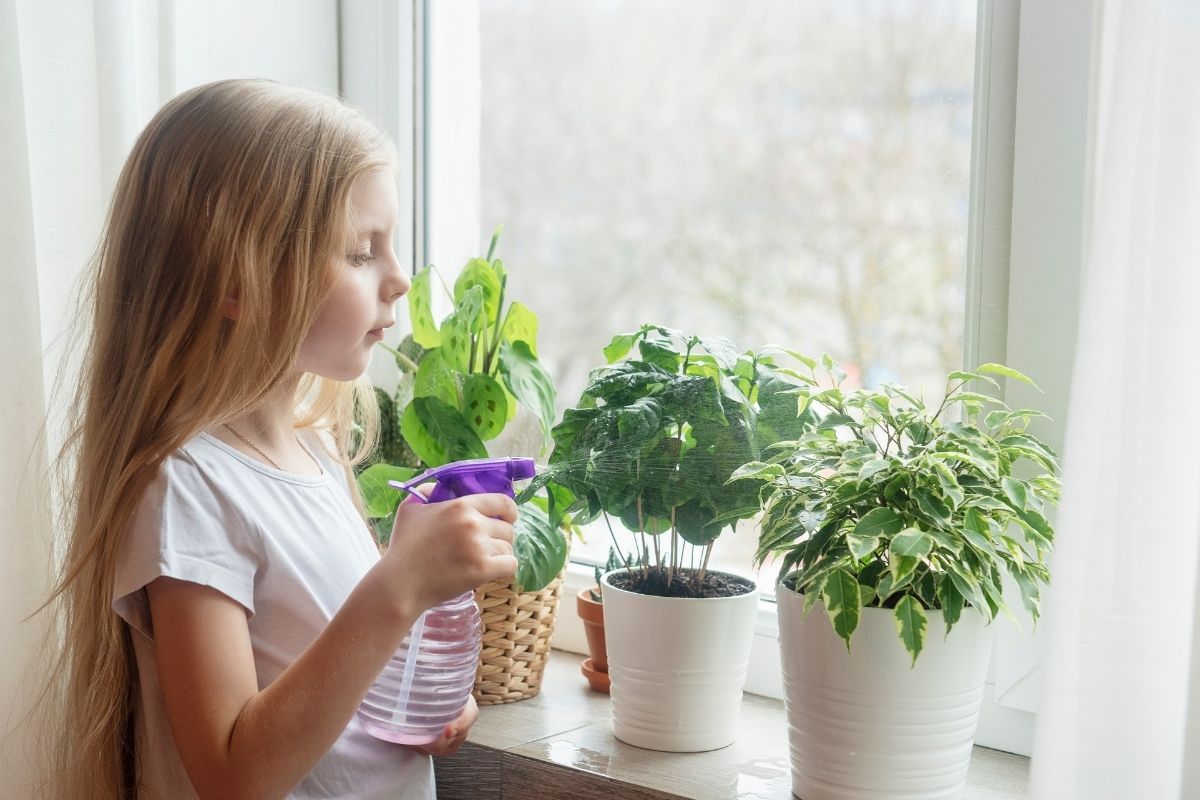Hydrangeas can make for a beautiful addition to your garden, however, they have to be watered correctly to reach their full flowering potential.

As their name suggests, Hydrageras (hydra is the Greek word for water) need a lot of water. Although, how much?
As opposed to other plants in your garden, Hydrangeas need a lot more water, without it, you’ll notice them beginning to wilt, quickly. Therefore, during the summer months, you should be watering them two or three times a week.
The time of day is also important when watering your plants. Here, you should aim to water them in the morning or evening, as opposed to during the heat of the day.
While hydrangeas require a lot of water, it is also as easy to overwater your plants as it is to underwater them – both instances have the ability to stunt your hydrangea’s growth.
Plus, long-term hydration issues can lead to your plant withering and, ultimately, dying. However, luckily for you, when it comes to watering your hydrangeas, it really isn’t too difficult.
With this in mind, this article will explore everything you need to know about watering your Hydrangeas. All you need is a little patience to keep your hydrangeas happy and healthy.
Signs Your Hydrangea Needs Watering
Hydrangeas can have issues with both overwatering and underwatering. Both instances create stunted growth, and, ultimately, death. So, you may be wondering, how do you know it’s time to water your Hydrangea?
The easiest indicator to determine this is by checking the soil around your Hydrangea. Here, simply stick your finger four inches deep into the soil (to the point where it reaches your knuckles) to check the soil’s moistness.
Once done, if the soil is dry, then you’ll know it is time to water your Hydrangea.
During the heat of the day, hydrangeas have the capability to look wilted even though the ground is moist, therefore, you should rely on the ground rather than appearance.
That said, if your plant looks wilted in the morning or as the temperature begins to drop, then this could be a sign your hydrangea needs watering, too.
If you notice brown leaves forming on your hydrangea, it could be a sign of under/ over-watering. Here, the soil should help indicate the difference.
For instance, if you find the soil constantly damp, the issue here is overwatering. Alternatively, if it is dry, then the opposite problem is present here.
How To Water Established Hydrangeas?
The most important aspect when it comes to watering your hydrangeas is ensuring they receive adequate water for their roots. Here, you can use a soaker hose or drip feeder to help achieve this.
Moreover, keep in mind that different types of hydrangeas require different amounts of water. For instance, hydrangea quercifolia and hydrangea arborescens require less water, while hydrangea macrophylla requires more water.

How To Water Newly Planted Hydrangeas?
When it comes to watering newly planted hydrangeas, you want to keep them moist until you have established an adequate watering routine. This is especially important during hot or drought conditions.
You’ll want to keep your hydrangea in water-retentive soil that contains adequate drainage. As opposed to one that is sitting in water, especially outdoors.
If your Hydrangea is in the ground, then you should aim to water it at least three times a week – this helps to keep the roots strong.
Since they have shallow roots, mulch is a requirement. To help maintain the moisture, opt for 2-3 inches of hardwood mulch.
In addition to this, it will eventually break down in the ground to provide the soil with some organic matter.
How To Water Hydrangeas In Pots?
If you keep your hydrangea in a pot outdoors, then the best way to retain moisture is in a light-colored ceramic pot.
You should avoid dark-colored pots since they absorb heat faster. Plus, you’ll want to ensure that all your pots have drainage holes, too.
You should keep your hydrangea thoroughly watered, watering at least three times a week. Another tip is to water all around the container, not just in one position.
You’ll know when your plant has enough water when it comes out of the drainage holes.
However, ensure your plant is never sitting in water – this could create root rot.
How To Water Indoor Hydrangeas?
When it comes to watering your indoor hydrangeas, the same rules apply when watering outdoor ones. If you’re keeping your plant indoors, the amount of water remains the same, however, you’ll want to provide them with more sunlight.
Therefore, place them next to a big, bright window in a room that is cool for the best results. Again, never let your plant sit in water.
For the best color and flowers, hydrangeas love at least four hours in the morning sun. Although, if you live somewhere higher than Zone 7, you should keep them protected from the afternoon sun.
With the right watering, you should be rewarded with hydrangeas that will make the whole neighborhood jealous.
Things To Keep In Mind When Watering Hydrangeas
- If your fertilizer is a liquid type and your plant is dry, then you should water your plant 4-6 hours before using the fertilizer – this prevents burning.
- Always water at the base to prevent fungus or mold from growing on your plant.
- When establishing a plant, water thoroughly and at least three times a week.
- To retain moisture, mulch the plant.
- If you notice wilting leaves, it is time to water.
Final Thoughts
One of the most challenging aspects of keeping a plant is ensuring it has enough water. However, with a little patience and a lot of care, you should have happy and healthy hydrangeas in no time.
Hopefully, this guide has informed you about everything you need to know when watering a hydrangea plant.
- Best Hanging Plant For Low Light - September 4, 2023
- Best Indoor Plants Florida - August 28, 2023
- Best Plants For Bathroom Smells - August 21, 2023








